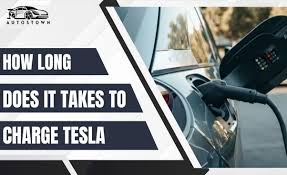
Charging a Tesla vehicle depends on a variety of factors, including the type of charger used, the model of the Tesla, and the state of charge of the battery. Below is a detailed explanation based on different charging methods and scenarios.
1. Charging time based on charger type
Supercharger (Level 3):
Tesla Superchargers are the fastest way to charge a Tesla vehicle. These DC fast chargers can charge up to 200 miles of range in about 15-30 minutes. They can provide charging speeds of up to 250 kW depending on the Supercharger version and Tesla model.
Level 2 Charger (Home or Public):
Level 1 Charger (Standard Outlet):
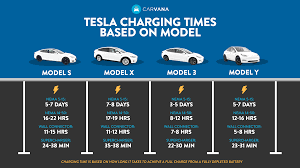
2:Charging time by Tesla model
Tesla Model S:
Charging time will vary based on charger used and Model S version. With a supercharger, it can achieve an 80% charge in about 30 minutes. With a home charger, the Model S will take about 6-10 hours to fully charge.
Tesla Model 3:
A Tesla Model 3 can charge up to 80% in about 20-30 minutes using the Supercharger. With a home level 2 charger, it will take about 6-8 hours to fully charge.
Tesla Model X:
Charging times are similar to the Model S due to the battery’s comparable size. Supercharging can take the battery to 80 percent in about 30 minutes, while home charging takes 8-12 hours, depending on the version.
Tesla Model Y:
Like the Model 3, a Model Y can use a supercharger to charge up to 80% in about 25 minutes. Home charging takes 8-10 hours to fully charge.
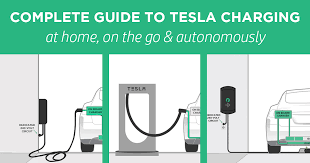
3. Factors affecting charging speed
Battery Size:
Tesla models come with different battery capacities, from 50 kWh to 100 kWh. Larger batteries take longer to charge.
State of charge of the battery:
The lower the state of charge, the faster the initial charging process. Tesla vehicles charge fastest between 10% and 80%, with the charging speed slowing significantly after 80% to preserve battery longevity.
Charging Environment:
External factors such as temperature can affect charging times. Charging may take longer in extremely cold temperatures, as the battery management system will need to warm up the battery.
Maximum Charging Rate:
Maximum charging rates vary among Tesla models, and the charging infrastructure may not always deliver at the maximum rate. Superchargers, for example, can produce up to 250 kW, but older superchargers can only offer 150 kW.
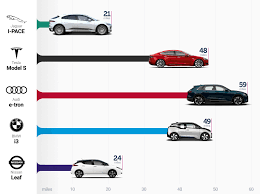
4. Battery life considerations
Charging the Tesla to 100% repeatedly is not recommended for daily use. Tesla recommends keeping the charge level between 20% and 80% for daily driving, as this preserves the battery’s health over the long term. Using fast chargers, such as superchargers, can also often have a small impact on battery life, although Tesla’s battery management system minimizes this impact.Important Information
Charging a Tesla varies significantly based on model, charger type and current battery level. Superchargers are the fastest option, taking 15-30 minutes to provide enough range, while home charging can take several hours. Understanding these factors will help optimize charging strategies and maintain battery health.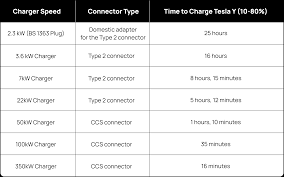
How long to charge a tesla model 3?
Charging the Tesla Model 3 depends on several factors, such as the type of charger, initial battery level, and charging environment. Below is a detailed breakdown of how long it typically takes to charge a Tesla Model 3 based on different charging methods.
Here we will discuss some important factors
1. Super Charger (DC Fast Charging)
Charging Time: A Tesla Supercharger can charge a Model 3 battery from 10% to 80% in about 20-30 minutes. Super chargers are the fastest charging option available, providing up to 250 kW of power.
Range Achieved: A supercharger can add about 170-200 miles of range in just 15-30 minutes, depending on the Model 3 variant and current charging rate.
It’s ideal for long road trips or situations where you need to charge quickly.
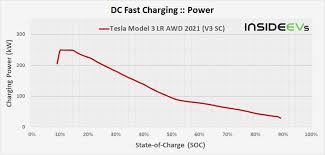
2. Level 2 charger (240V outlet)
Charging time:
Using a Level 2 charger, which is common for home charging setups or public stations, the Tesla Model 3 can be fully charged in about 6-8 hours. This method provides power from 7 kW to 11 kW depending on the charging station.
Range Achieved:
You can expect to add 30-44 miles of range per hour of charging.
Level 2 charging is the most common and practical method for everyday use, especially overnight charging at home.
3. Level 1 charger (standard 120V outlet)
Charging time:
A Level 1 charger, which uses a standard household 120V outlet, is the slowest option for charging a Tesla Model 3. This method adds about 3-5 mph of range, meaning it can take longer to charge from empty to full. 24 hours
Use Case:
Level 1 charging is generally not practical for daily charging unless the vehicle’s daily driving range is low.
This method is best used for emergencies or when other charging options are not available.
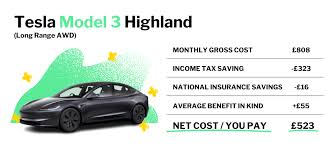
4. Charging time based on battery condition
The Tesla Model 3 comes with a variety of battery options, and charging times may vary based on battery size and how much charge is left when you start:
Long-Range Model 3 (82 kWh Battery):
It usually takes about 30 minutes to charge from 10% to 80% on a supercharger.
Standard Range Model 3 (60 kWh battery):
Charging from 10% to 80% will take slightly less time, around 20-25 minutes on a supercharger.
Charging slows down as the battery approaches 100% to protect battery longevity. Most drivers usually charge 80-90% for daily driving.
Factors that affect charging time
Battery size:
Larger battery packs (such as long-range versions) take longer to charge than smaller ones (such as standard-range versions).
Battery State of Charge:
Charging from a low state of charge (eg, 10%) will be faster than charging from a higher level (eg, 80%), especially when using a fast charger.
Charging environment:
Cold weather can slow down charging because the battery needs to warm up before it can charge effectively. Tesla vehicles have a built-in battery management system to handle this.
Charger speed:
Not all superchargers or level 2 chargers provide the same speed. Tesla’s V3 superchargers can deliver up to 250 kW, while older versions can deliver up to 150 kW, which affects charging time.
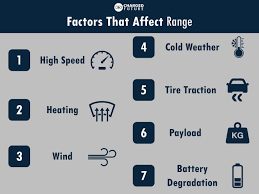
Conclusion:
Charging the Tesla Model 3 is extremely flexible, ranging from 20-30 minutes for a quick top-up using a Supercharger to 6-8 hours for a full charge at home using a Level 2 charger. There is time. For everyday use, most Tesla owners find it most convenient to charge overnight at home with a Level 2 charger, while Superchargers are ideal for quick, long-distance trips.





